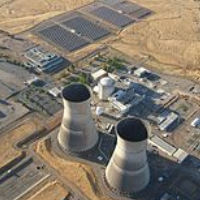Less Cancer Found after Rancho Seco Nuclear Plant Closes
 Rancho Seco Nuclear Generating Station
Rancho Seco Nuclear Generating Station
Researchers studying the health of 1.4 million people living near the Rancho Seco Nuclear Generating Station in Sacramento County aren’t pointing any fingers, but they have found a marked decrease in the incidence of cancer since the troubled facility closed in 1989.
The study, published in the peer-reviewed Biomedicine International, found 4,319 fewer cancers over 20 years, including declines in 28 of 31 specific categories. Fourteen of the reductions were considered statistically significant and included better results for women, children and Hispanics.
There were fewer incidences of cancer among both men and women, although the changes were four times as pronounced among females. Data on mortality rates were not included in the study.
It’s the first study of long-term changes in the health status of people living near nuclear plants and is certain to be of interest to the 65 communities hosting 104 aging nuclear reactors around the country. That includes the plant in San Onofre, between Los Angeles and San Diego, which has been shuttered since radioactive steam leaked from damaged reactor tubes in January 2012.
The study’s co-authors, epidemiologist Joseph Mangano and internist/toxicologist Janette Sherman, did not claim there was cause and effect between the plant and cancer, but recommended further studies be done. Mangano is executive director of the Radiation and Public Health Project.
The public voted to shut Rancho Seco down in 1989 after a series of mishaps culminated in what is considered the third-most-serious safety-related occurrence at a nuclear plant in U.S. history, behind the Three Mile Island accident and a fire at Browns Ferry. A power failure at Rancho Seco caused steam generator dryout, a potential precursor to core meltdown.
The Rancho Seco plant opened in 1975, but closed for four months the next year after loose parts were found in the plant’s generator. The plant had four shutdowns in 1978, six in 1980, 12 in 1981, 11 in 1982 and five in 1983, according to information compiled by The Energy Net.
In 1984, an explosion and fire caused the facility to close for 38 days. Two workers were killed that year when a boiler burst. Plant operations were plagued by a series of additional mishaps over the years, including the dumping of radioactive waste water in nearby streams.
On December 26, 1985, the reactor came close to a meltdown and the U.S. Nuclear Regulatory Commission (NRC) staff concluded that fundamental design flaws which were known by plant operators and the NRC itself were at the heart of the problem and should have been fixed years before. “In summary, the information was available and known which could have prevented this overcooling transient; but in the absence of adequate plant modifications, the incident should have been expected,” the staff wrote.
The plant’s chief of nuclear operations, John Ward, was fired in 1986, despite having a reputation as being a fixer of difficult situations. He was quoted at the time as saying, “It was like being in charge of the Keystone Kops.”
–Ken Broder
To Learn More:
Long-Term Local Cancer Reductions Following Nuclear Plant Shutdown (by Joseph J. Mangano and Janette D. Sherman, Biomedicine International) (pdf)
Drop in Cancer after Closure of California Reactor Shows Need for Full Review of Low-Level Radiation Risks (PR Newswire)
Rancho Seco (Union of Concerned Scientists) (pdf)
40% of U.S. Nuclear Reactors Have Had “Near-Misses” Since 2010 (by Matt Bewig, AllGov)
- Top Stories
- Controversies
- Where is the Money Going?
- California and the Nation
- Appointments and Resignations
- Unusual News
- Latest News
- California Forbids U.S. Immigration Agents from Pretending to be Police
- California Lawmakers Urged to Strip “Self-Dealing” Tax Board of Its Duties
- Big Oil’s Grip on California
- Santa Cruz Police See Homeland Security Betrayal in Use of Gang Roundup as Cover for Immigration Raid
- Oil Companies Face Deadline to Stop Polluting California Groundwater





